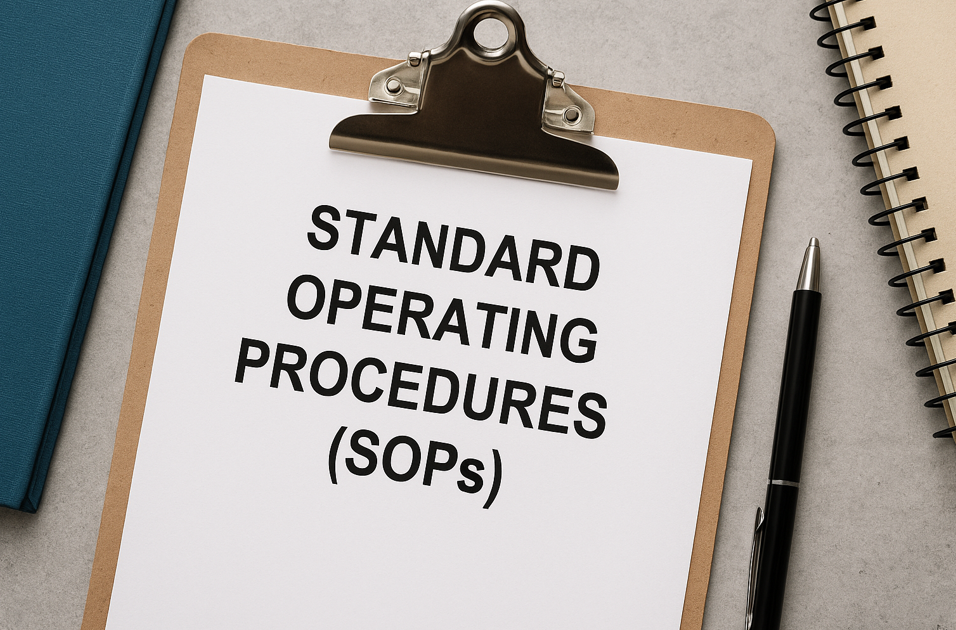Creating SOPs for Clinical Research Organizations (CROs), Site Networks, and Individual Clinical Research Sites
Standard Operating Procedures (SOPs) are foundational documents in drug development. They demonstrate regulatory compliance and provide practical, usable guidance for daily operations. Sponsors often request SOP master lists when evaluating vendors, and regulatory agencies regularly inspect them for adherence. A well-constructed SOP framework ensures consistency, clarity, and quality across functions, ultimately safeguarding inspection-readiness across CROs, site networks and investigator sites.
Key Principles:
· Regulatory and compliance alignment: SOPs must comply with the International Council for Harmonisation) ICH Good Clinical Practice (GCP) E6[R3], U.S. FDA regulations (21 CFR 11, 50, 54, 56, 312, 812, 314, 320), and regional requirements (e.g., European Medicines Agency (EMA), Medicines and Healthcare products Regulatory Agency (MHRA), and Pharmaceuticals and Medical Devices Agency (PMDA)). Device-related research should also align with the International Organization for Standardization (ISO) 14155:2020 and European Union Medical Device Regulation (EU MDR) 1027/745.
· Usability: SOPs must be practical, written in plain language with stepwise instructions, and include clear responsibilities tailored to job roles. Use process flowcharts, stepwise instructions, and checklists for complex workflows.
· Risk-based approach: In line with ICH E6(R3) and TransCelerate Risk-Based Quality Management (RBQM) frameworks, SOPs should integrate proactive risk identification, escalation pathways, and corrective and preventive action (CAPA) mechanisms to prevent deviations and strengthen quality-by-design.
· Organizations should regularly review overall business performance in conjunction with data on SOP adherence, deviations, and quality issues. Particular attention should be paid to occurrences of quality issues that are noted in combination with SOP adherence.
Structured Outline:
The SOP master list should include:
SOP title and number
Objective and owner
Version status and next review date
Clear index and categorization by function
Standardized SOP format:
Header/control information (ID, version, effective date, approval signatures)
Purpose and scope
Roles/responsibilities
Definitions, abbreviations, and acronyms
Stepwise procedures
Documentation/records (forms, logs, systems)
References
Version control
Practicality and usability
Flowcharts for complex processes
Checklists and templates for consistency
Sufficient detail and clarity without unnecessary complexity
Training modules integrated with SOP acknowledgements linked to specific job roles
Alignment of quality management systems (QMS)
References to SOPs for supporting processes/activities
References to process-specific training, which is indicated as necessary
Audit and continuous improvement
Routine internal audits to test compliance
Update processes when they are no longer practical
Ensure logical coverage across functions (safety reporting, data management, vendor oversight)
Regulatory Update - ICH E6(R3)
The recently finalized ICH E6(R3) Good Clinical Practice guidance emphasizes:
Greater flexibility for modern trial designs and diverse data sources
Integration of quality-by-design and risk-based quality management embedded in trial conduct
Clarification of sponsor and investigator responsibilties
Promotion of proportionality, relevance, and critical thinking across the trial lifecycle.
These principles should inform and shape all SOPs going forward, ensuring documents are not just compliant but also fit-for-purpose, risk-aware, digitally integrated, and globally harmonized.
Medical Affairs
Where to Publish Your Manuscript
Selecting the right journal for manuscript submission is a process that continues to grow in complexity with competing priorities of compliance, scientific impact, accessibility, speed and cost. Authors should begin by defining their intended audience and clarifying their main objective: maximizing impact, scientific prestige, influencing clinical practice or ensuring broad reach.
Key Considerations:
Audience: who are you trying to reach: researchers, clinicians, regulators or broader stakeholders?
Indexing: is the journal indexed in PubMed, Google Scholar, Embase, Scopus, Web of Science or regional databases relevant to your field?
Access model: open access vs. subscription
Publication fee: article processing charges, waivers or sponsor support
Journal Quality and Integrity:
Reputation and standing in the field
Metrics: impact factor, h-index, citation half-life, and Altmetric scores (used responsibly)
Peer-review rigor
Fit with the journal’s aims and scope
Familiarity with editorial board: consider reaching out to the editor prior to submission to gauge their interest in publishing your manuscript in their journal. Detail why this paper would be of interest to their readers.
Does it align with the scientific platform and publication plan?
Does it offer congress tie-ins?
Is it a special issue or themed collection in the area of expertise?
Beware of fraudulent journals reaching out under disingenuous purposes (e.g. click bait, obtaining a fee when a journal does not exist).
Consider a membership in Committee or Publication Ethics (COPE) or Director of Open Access Journals (DOAJ) to avoid a predatory journal.
Practical Issues:
Acceptance rate
Time to first decisions/time to publication
Availability of special issues, fast track, or online-ahead-of-print options
Ethics and Compliance:
Alignment with Good Publication Practice (GPP2022) and the International Committee of Medical Journal Editors (ICMJE) authorship criteria
Requirements for conflict-of-interest disclosures, trial registration (e.g., ClinicalTrials.gov) and data-sharing policies
In Summary: The choice of journal should align with the scientific content, target audience and strategic communications objectives. Balancing these factors often determines the real-world reach and visibility of your work. High-impact journals may provide prestige but at the cost of lower acceptance rates and longer timelines, while more specialized or open-access journals may offer faster publication and broader accessibility. Ultimately, the choice should align with both the scientific content and strategic communication objectives, compliance standards, and stakeholder needs. Balancing these considerations ensures that your work achieves both credibility and reach.

